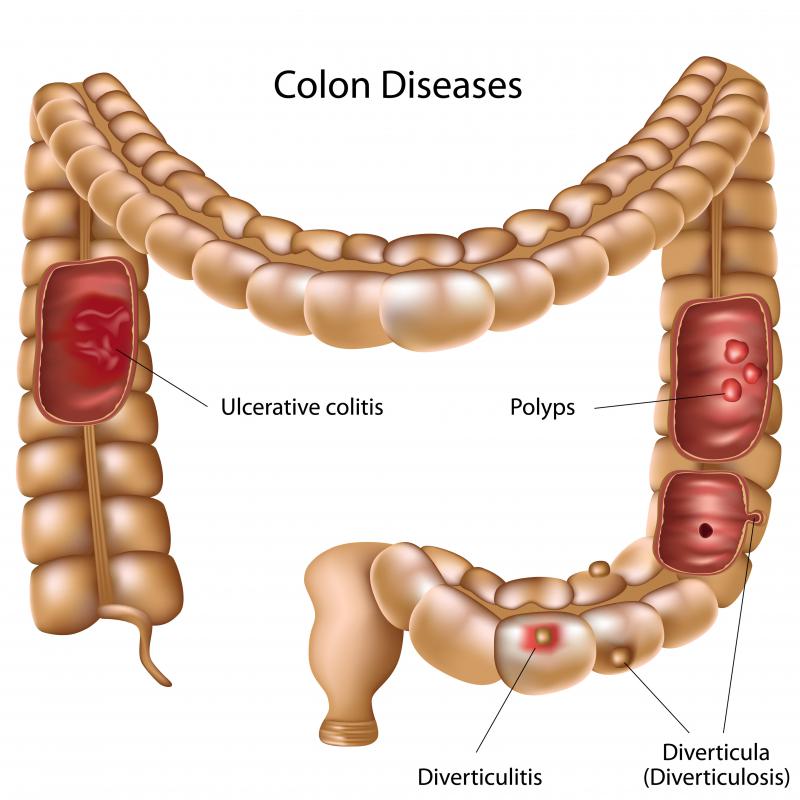At WiseGEEK, we're committed to delivering accurate, trustworthy information. Our expert-authored content is rigorously fact-checked and sourced from credible authorities. Discover how we uphold the highest standards in providing you with reliable knowledge.
What Is a Polyp Biopsy?
A polyp biopsy is a medical procedure that is used to determine whether certain types of abnormal tissue growths are cancerous or benign. This procedure generally involves either removing the entire polyp or, less frequently, taking a small sample of the polyp. This sample is then analyzed to determine whether the cells are cancerous, or malignant. The procedure is usually very simple when performed on polyps that are on the surface of the body but is slightly more complicated, although minimally-invasive, when performed internally.
Polyps occur naturally throughout the body, although they are most common in areas with access to a rich blood supply. They usually resemble fleshy mushrooms and are made up of a head connected to the body by a tube or stalk. They are most common in the colon and rectum. In many cases, polyps are benign and are simply odd but harmless growths. They can, however, either be or become cancerous, and a doctor will frequently employ a polyp biopsy to test for cancer.

When a polyp is located externally, a polyp biopsy typically consists of nothing more than carefully removing all abnormal tissue and submitting it for laboratory testing. Polyps located within the body are most often biopsied using endoscopy. In this process, a slim tube with a camera and miniature surgical instruments attached is inserted into the body in a minimally-invasive procedure. The camera is used to search for polyps and other abnormalities.

A physician can remove either a piece of the polyp or the entire polyp. Removal of entire polyps during a polyp biopsy is preferred, as polyps, particularly those in the colon or intestines, are apt to develop into cancer and serve no useful purpose. Some polyps may have grown into the walls of the intestines or other organs. These are more likely to be cancerous and removal can be somewhat complicated.
Once a growth has been removed from the body, it is sent for laboratory analysis. This analysis will examine the cells in the tissue sample and determine if they are cancerous. If the cells are cancerous, additional exploratory procedures may be called for unless the cancer has been caught very early and is confined to the polyp itself.
Some practitioners have begun to develop non-surgical alternatives to the polyp biopsy procedure. Experiments have been conducted that rely only on advanced medical imaging to determine whether or not polyps are cancerous. Researchers hope to employ virtual colonoscopies and virtual biopsies in most cases and rely on surgical procedures only in borderline or difficult-to-diagnose cases.
AS FEATURED ON:
AS FEATURED ON:












Discuss this Article
Post your comments